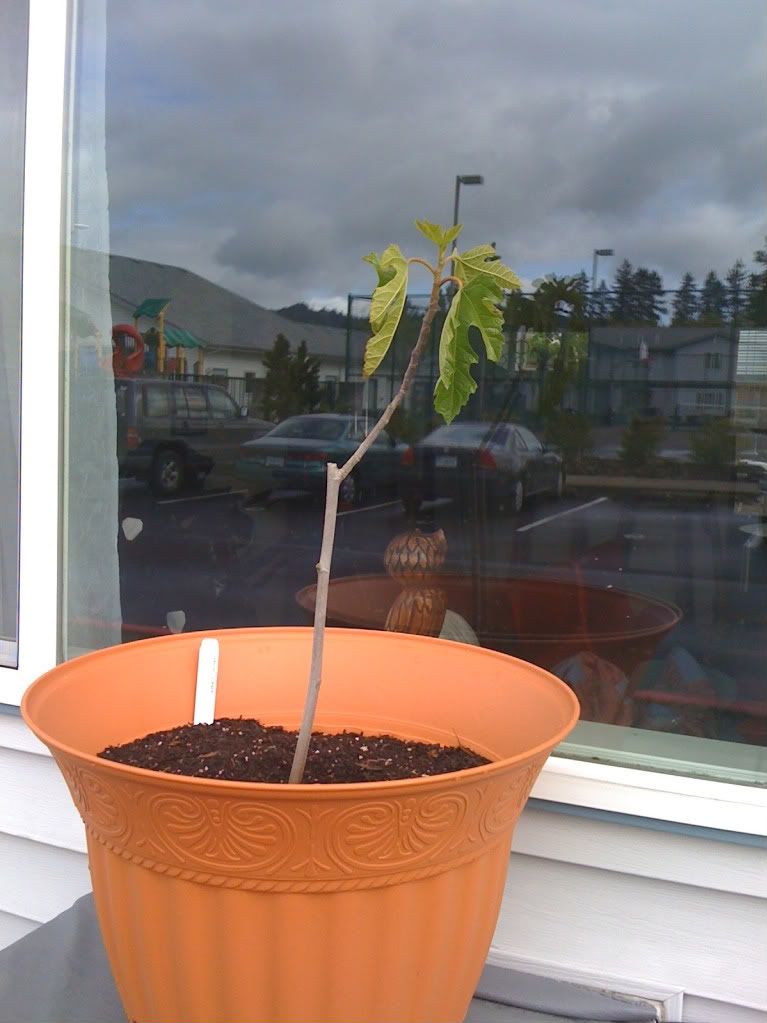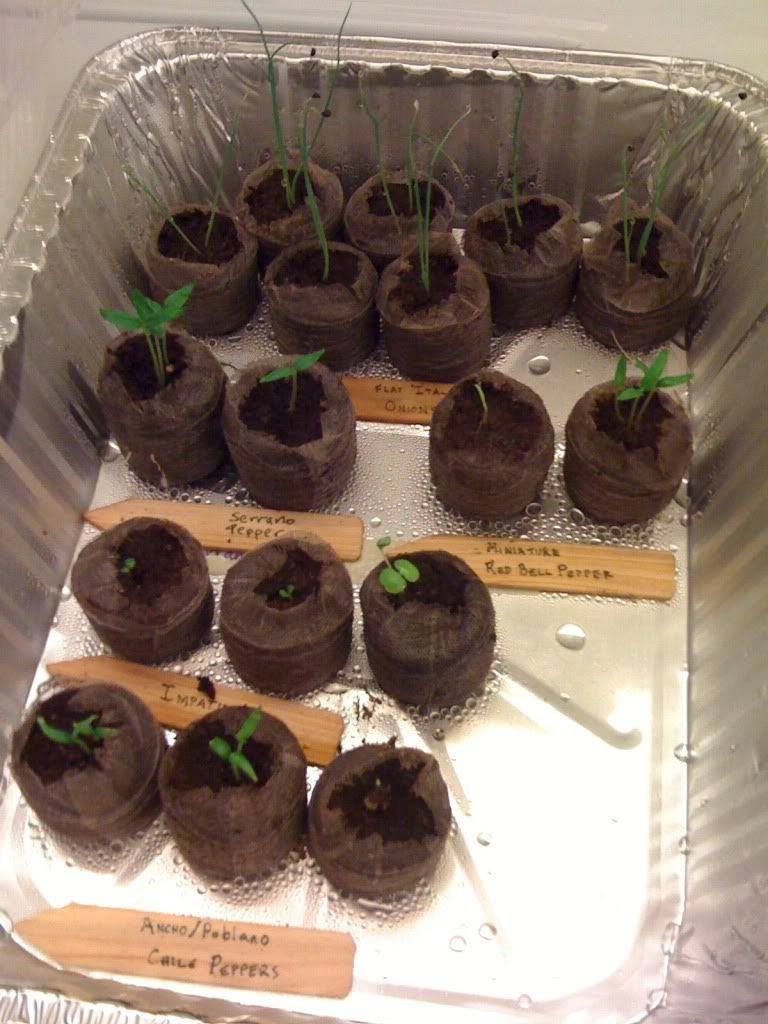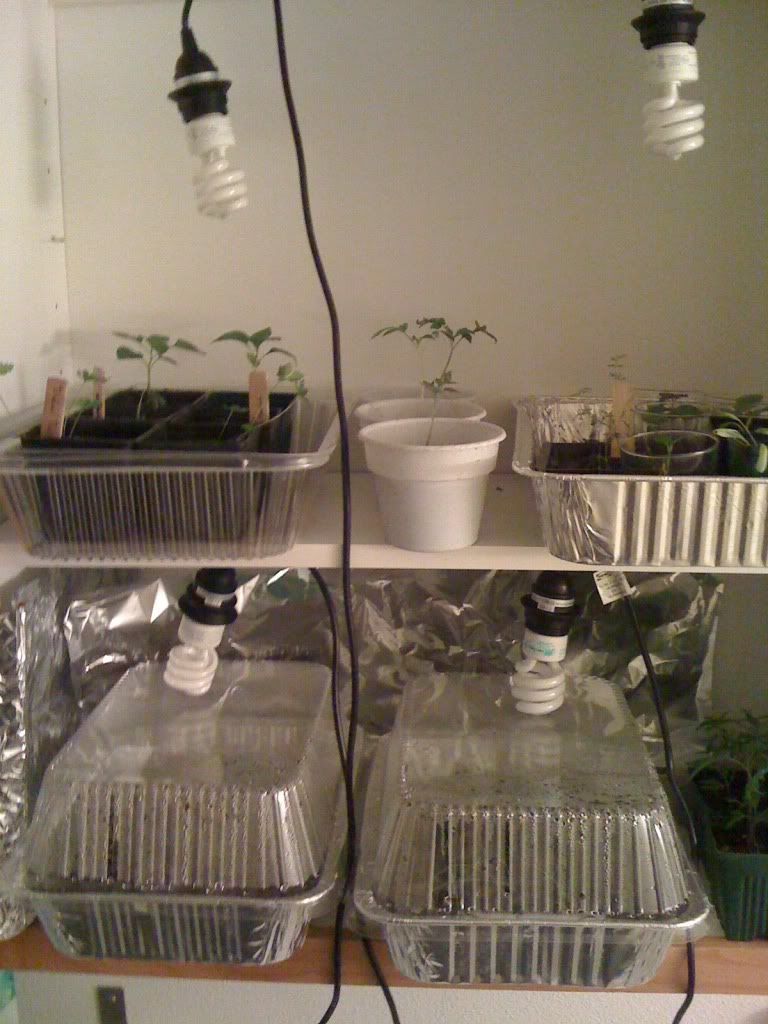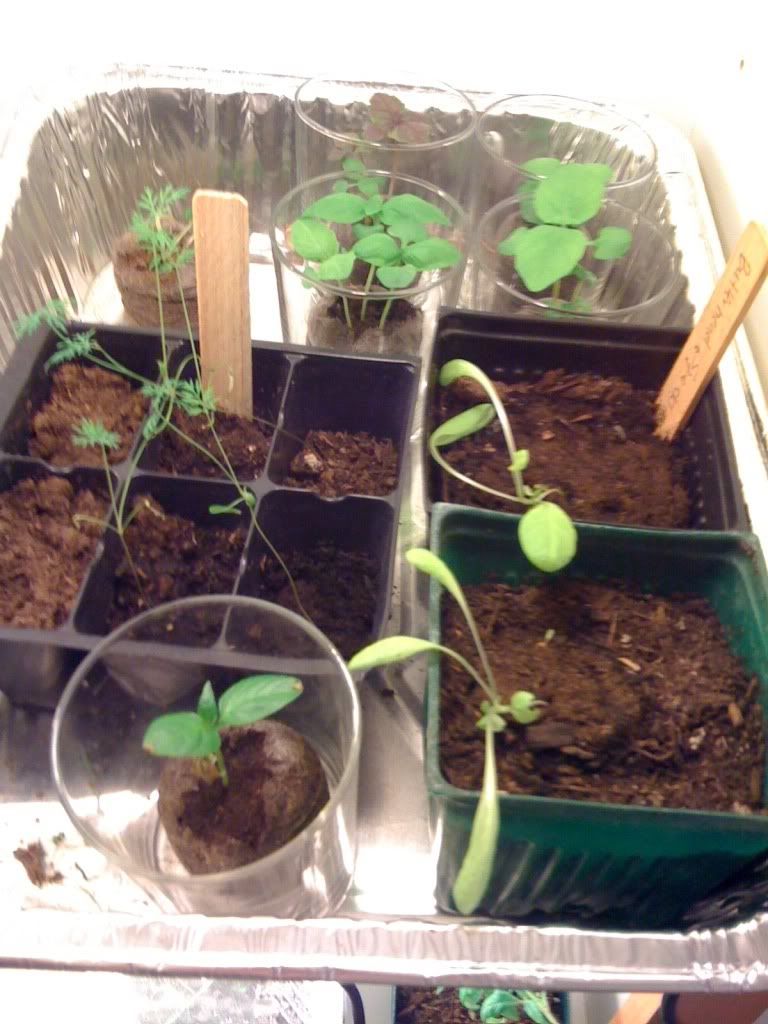Three days in a row of beautiful, warm weather, and I think that officially Spring is not just sprung, it is in full swing. Courtney and I missed the first Farmer's Market of the season due to a last minute late season ski trip and the second to the HOPES conference, but we made it to the third. And let me tell you, the time to buy starts for your garden is now. Courtney and I are growing almost everything for our first garden from seed, for the experience if nothing else, but getting starts from local farmers at the farmers market is an excellent idea as well.
While we were at the Lane County FM, half of the booths that normally bring fruits and vegetables to market were brimming with starts of everything from peppers to carrots, squash to onions, etc. to distinctly different etc. And while most of our garden is planned out and prepped for the shoots we are starting from seed (most of which we got for free at the Seed Exchange hosted by Lane Community College) we felt that there was room out front for one tiny fig tree. Because it was so cheap, and figs! For free ! Who can argue with that (no fair pointing out the initial expense)?
Our baby fig tree
Another screaming deal, there was a wild mushroom vendor who had just run out of morels, and was selling the remainder of his harvest (basically the ones that were broken or otherwise not presentable) for $2.50. It was probably about $20 worth by weight, and sold for nearly one tenth of that because they didn't look perfect. I didn't deliberate too long before forking over the two and a half bucks.
So as stated above, we are starting a garden (mostly) from seed this Spring, and so far it is going pretty well. We are starting most of our seeds in peat pots (about ten cents each) under CFLs in our laundry room, so far to great effect. We have successfully germinated tomatoes, onions, three different kinds of peppers, several spices, some flowers that are supposed to attract bees and other pollinating insects, some lettuces, and a few oddball items that were kind of foisted upon us at the seed exchange (like red orach, which neither one of us had heard of before we had the seeds in our hands). Our success rate has been pretty phenomenal so far, but I think maybe germinating is the easy part, hardening off and planting (or more likely potting for most of our veggies) may prove deadly for many of our heretofore healthy sprouts.
Our seedlings, about a week after sprouting
When we decided to start our plants from seed, we did a fair amount of research. Basically, the ideal environment for germinating most seeds (with some notable exceptions) is very warm and humid. There are a number of high buck kits you can buy, and several medium buck plastic tray systems that do the same job, but we decided that the exact same purpose could be served by those cheap, disposable roasting pans that they sell at the grocery store for about 5 bucks for 4 of them. Aluminum bottom, clear plastic top, they are ideal for letting light pass through while locking in the humidity. Also, they are recyclable, easy to pack and store for next season, and may have other uses between seasons, we'll see. So although they were designed to be disposable, they can be used in a greener manner.
Our impromptu growing station
Context: the shelves above our laundry
Some of the seeds we acquired recommended starting outdoors, so we sowed those directly in our soil. We have been getting most of our instructions from The Backyard Homestead, which is oriented to a much larger scale of gardening, but contains most of the info you will need to run a garden of any size, indoor or out. From testing and prepping your soil to knowing when to harvest, this book covers all the bases of growing your own vegetables. It also goes into some detail about how to keep poultry and livestock, but we don't have the kind of yard that makes sense for keeping any animal stock around. If you are a home brewer you might be surprised to find out how easy it is to grow your own hops (also covered in this book). Or barley for that matter. Maybe the ideal garden for you is just grains and hop vines. Of course, it couldn't hurt to experiment with strange grains, or growing some fruit to flavor a Lambic inspired ale.
So far, the seeds sown outdoors are mostly sprouting as well, some took much longer than others, but the success rate seems pretty good. Mainly it is carrots, radishes and beets, along with a different variety of lettuce. The trouble outside, unfortunately, is that slugs get to everything. I will discuss slug and pest prevention in another post, however, because it is a big topic and this post is already too long.
Here are some of our starts after about a month of growth:






Looking forward to the discussion on pests - I have a Thai pepper plant that had all its new growth eaten by pests I couldn't see with the naked eye.
ReplyDelete